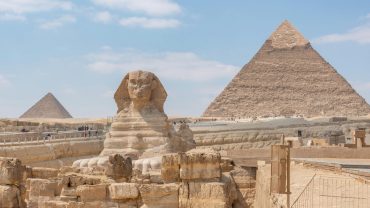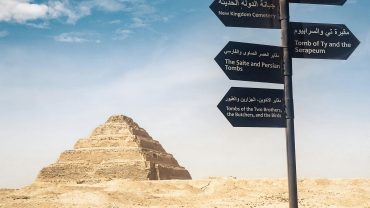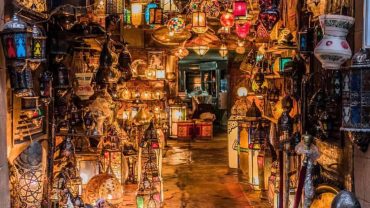Luxor, often referred to as the “world’s greatest open-air museum”, is an iconic city located on the banks of the Nile River in southern Egypt. It is a place where ancient history comes to life, offering a remarkable glimpse into the civilization of Egypt’s pharaohs. With its magnificent temples, royal tombs, and ancient monuments, Luxor is an essential destination for travelers who seek to explore the heart of ancient Egyptian culture and history.
Luxor was once the capital during the New Kingdom period, making it one of the most important cities of ancient Egypt. Today, Luxor is home to numerous archaeological sites, some of which are among the most visited in the world. With its combination of temples, tombs, and historical landmarks, Luxor continues to draw millions of tourists each year, eager to experience its rich history and stunning architecture.
Top Attractions in Luxor
Luxor is home to some of the most famous and well-preserved monuments from ancient Egypt. Here are the key must-see attractions that you should include in your visit to this fascinating city:
- Valley of the Kings
- Karnak Temple
- Luxor Temple
- Colossi of Memnon
- Temple of Hatshepsut
- Temple of Medinet Habu
- Luxor Museum
- Mummification Museum
- Ramesseum
- Deir el-Medina
Each of these sites offers a unique perspective on ancient Egyptian culture, religion, and art. Whether you’re exploring the majestic temples, the royal tombs, or learning about Egypt’s fascinating mummification process, there is something for everyone in Luxor.
Luxor’s Famous Monuments and Historical Sites
- Valley of the Kings: Home to the tombs of the most famous pharaohs, including Tutankhamun, Ramses II, and Seti I, the Valley of the Kings is one of the most visited archaeological sites in the world. The tombs are richly decorated with vibrant murals and hieroglyphic art that provide insight into the religious and cultural practices of ancient Egypt.
- Karnak Temple: The largest religious structure ever built in Egypt, Karnak Temple is dedicated to the god Amun-Ra. The temple complex is a masterpiece of ancient Egyptian architecture, with its massive hypostyle hall and towering columns adorned with intricate transfervings and reliefs.
- Luxor Temple: Located in the heart of Luxor, Luxor Temple is a stunning example of ancient Egyptian religious architecture. The temple is dedicated to Amun-Ra and features colossal statues, towering obelisks, and beautiful wall transfervings that showcase the artistic brilliance of ancient Egypt.
- Colossi of Memnon: These two giant statues of Amenhotep III stand at the entrance of his mortuary temple. Despite the ruins of the temple surrounding them, the Colossi of Memnon remain one of Luxor’s most iconic landmarks.
- Temple of Hatshepsut: The Temple of Hatshepsut is a remarkable structure dedicated to Hatshepsut, one of ancient Egypt’s most successful female pharaohs. Transferved into the cliffs of Deir el-Bahari, the temple is a masterpiece of Egyptian architecture and engineering.
- Temple of Medinet Habu: This massive mortuary temple dedicated to Ramses III is one of Luxor’s most well-preserved sites. Known for its detailed reliefs, Medinet Habu offers a fascinating look into the religious and political life of ancient Egypt.
- Luxor Museum: The Luxor Museum is home to an impressive collection of artifacts, including statues, mummies, and ancient Egyptian treasures. It provides an excellent opportunity to learn more about Luxor’s fascinating history.
- Mummification Museum: A unique museum dedicated to the process of mummification, offering a detailed explanation of the rituals and techniques used by ancient Egyptians to preserve their dead.
- Ramesseum: A mortuary temple built by Ramses II, the Ramesseum is an awe-inspiring structure filled with detailed inscriptions and sculptures.
- Deir el-Medina: The village of the ancient Egyptian workers who worked on the tombs of the Valley of the Kings. It is one of the most significant archaeological discoveries in Luxor.
Other Activities to Explore in Luxor
While Luxor’s temples and tombs are the main attraction, there are plenty of other activities to enjoy as well:
- Nile River Cruises: Experience the beauty of the Nile by taking a scenic river cruise. Many tours offer views of Luxor’s temples and tombs from the water, creating a unique experience that allows you to appreciate the grandeur of ancient Egypt from a different perspective.
- Hot Air Balloon Ride: For a truly breathtaking experience, take a hot air balloon ride over Luxor. This gives you a bird’s eye view of the city and its historic landmarks, including the Valley of the Kings and the Temple of Hatshepsut.
- Local Markets: Luxor is home to a variety of local markets, where you can shop for handmade crafts, jewelry, and Egyptian souvenirs. These vibrant markets offer a glimpse into the culture and lifestyle of modern-day Egypt.
Best Time to Visit Luxor
The best time to visit Luxor is during the cooler months, from October to April, when the weather is more pleasant. The summer months can be extremely hot, especially during the day, so early mornings or late afternoons are ideal for exploring the outdoor sites.
Conclusion
Luxor is a city like no other, rich in history, culture, and ancient wonders. Whether you’re walking through the colossal temples of Karnak, exploring the tombs of the Valley of the Kings, or cruising along the Nile, Luxor offers an unparalleled experience for history enthusiasts and travelers alike. With its unrivaled archaeological treasures and stunning landmarks, Luxor is undoubtedly one of the top destinations in the world for anyone looking to immerse themselves in the awe-inspiring world of ancient Egypt.




Comment (0)